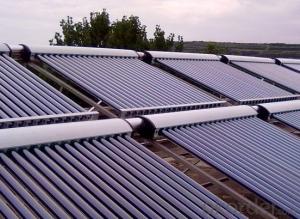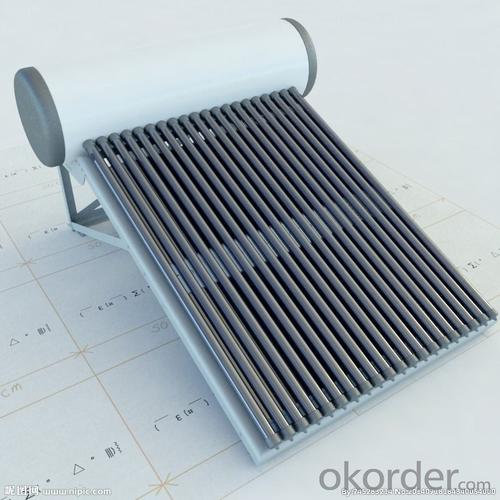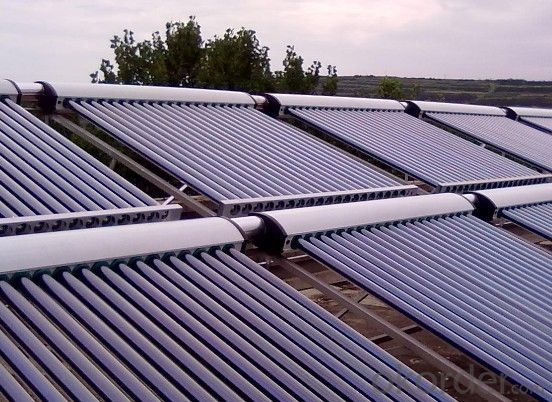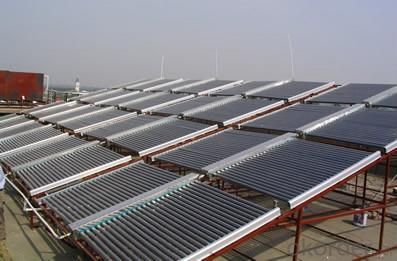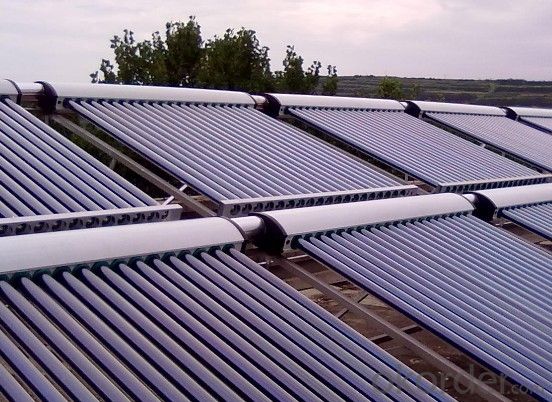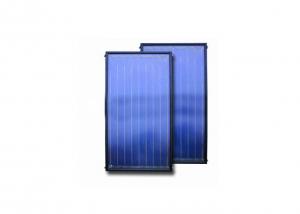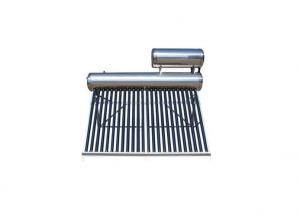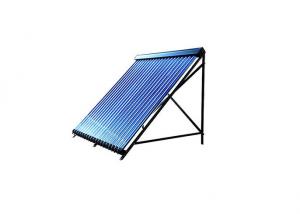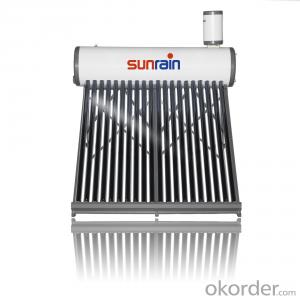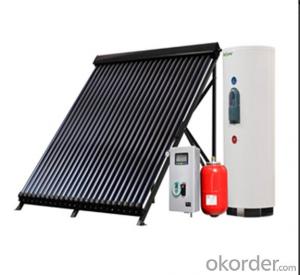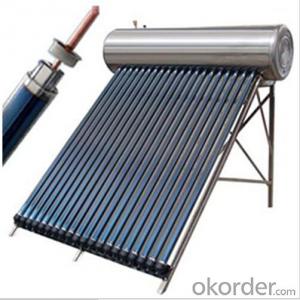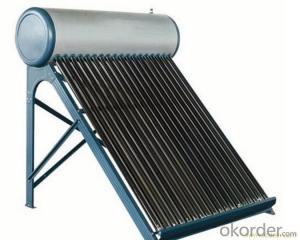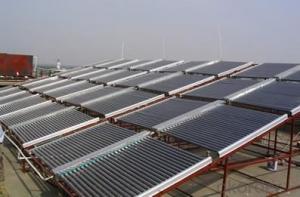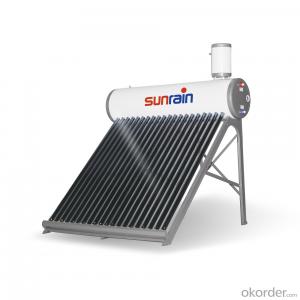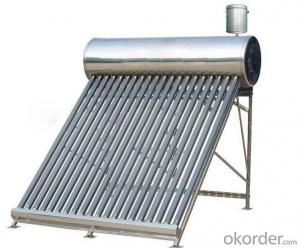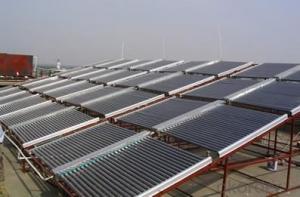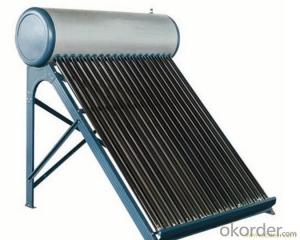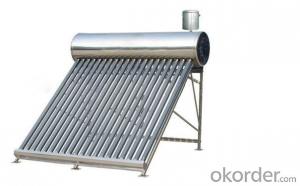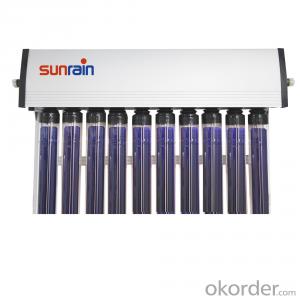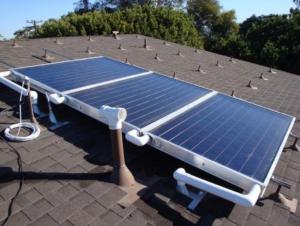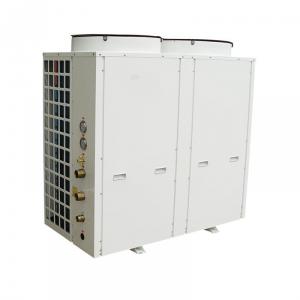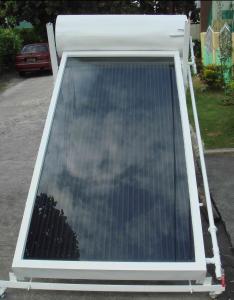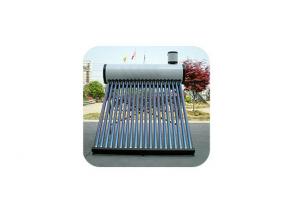28tube Non-Pressure Solar Water Heater Heating Element Collector
- Loading Port:
- China main port
- Payment Terms:
- TT OR LC
- Min Order Qty:
- 10 set
- Supply Capability:
- 10000 set/month
OKorder Service Pledge
OKorder Financial Service
You Might Also Like
Introduction of Non-Pressure Solar Water Heater:
Non-pressure Solar Heater is one of the most economical solar water heating device with pretty high efficiency at the same time. It consists of hot water storage tank, solar vacuum tubes with mouth plug in storage tank, and bracket supporting tank and tubes.When cold water in evacuated tubes is heated with solar irradiation, as the specific gravities of hot water and cold water are different, hotter water goes upward to storage tank and colder water goes downward to glass tubes. through this continuous circulation, the cold water in storage tank will be gradually heated till sunset.
Solar water heaters working principle
1. The solar collector absorbs solar energy and transmits it to the solar water heater tank through circulation
2. When the temperature of the collector reaches the set value, the controller starts the circulation pump automatically
3. The circulation pump makes heat-conducting liquid circulate automatically
4. The heat-conducting liquid transfers heat to water by lower heat exchanger in the water tank.
5. When the temperature difference between solar collector and heat pipe solar water heaters tank doesn't reach the set value, the circulation pump will be shut automatically
6. In case the temperature of the water tank does not reach Tmax, Electric Heating Element will start to work automatically
Solar water heaters working station component:
1. Operating screen
2. Manometer
3. Pump speed adjust switches
4. Temperature difference circulation pump
5. Flow rate indicator
6. Return circuit connector
7. Safety valve
8. Expansion vessel connector9. Return circuit connector
10. Wall mounting
11. Expansion vessel:8L
12. Pressure resistance: 10 bar pressure for expansion vessel
Solar water heaters specification:
Description | solar water heaters |
Material of out manifold | 0.55mm thickness color steel/ fluorine carbon steel |
Material of inner tank | Food grade 2.0 mm thickness SUS304 stainless steel |
Tank insulating layer | 40mm 45kg/m³ high-density polyurethane foamed |
Inlet and outlet hole | Male G1'' |
Max pressure | 0.6 Mpa |
Solar collector tube | 3.3 Borosilicate glass with N/Al coating |
Thickness of glass tube | 1.6mm |
Vacuum tube tightness | P≤0.005 Pa |
Absorption | as=0.93-0.96 (AM1.5) |
Emission ratio | εh=0.04-0.06 (80C±5C) |
Idle sunning property parameters | Y=220~260m2.C/KW |
Average heat loss coefficient | ULT=0.6~0.7W/(m2.C) |
Bracket: | 2.0mm thickness aluminum alloy |
Tank weight | 75KGS |
Tank size | 560mm Dia x 1810mm Height |
Tank capacity | 300L |
Solar collector | 2pcs 58x1800x15tube solar collector |
Absorber area | 2.811 m² |
Working station | SP116 working station |
Heat exchanger length | Upper:12m, Underside:18m |
Solar water heaters details show:

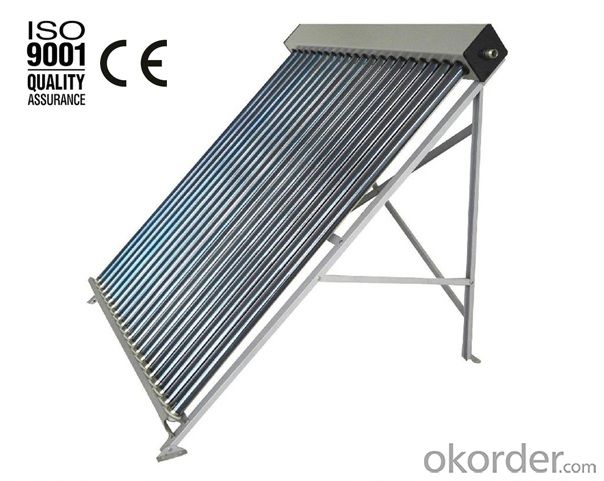
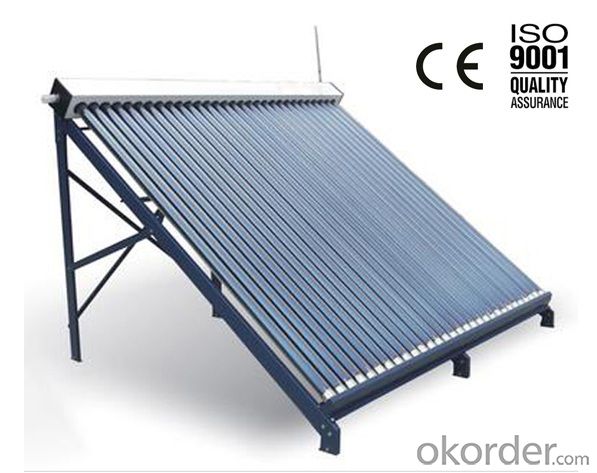
Benefits of this kind of solar water heaters:
1. Prolong the life of your existing water heater
2.Costs less than an electric, gas or oil water heater
3.No maintenance required
4.Lasts longer than a traditional hot water heater
5.Reduce your water heating costs
- Q: Can a solar water heater be used in areas with hard water?
- Yes, a solar water heater can be used in areas with hard water. However, it is important to consider the potential impact of hard water on the system's performance and lifespan. Hard water contains high levels of minerals like calcium and magnesium, which can lead to mineral buildup and scaling in the solar collectors and pipes. Regular maintenance such as descaling and cleaning may be required to ensure optimal performance. Additionally, using a water softener or installing a water treatment system can help minimize the negative effects of hard water on the solar water heater.
- Q: I am in the north, the winter is coming, the family of a solar water heater, solar water heater and a radiator to connect, realizes the indoor heating, there is no one to do this kind of transformation, how to realize the water cycle?Is there any way to reduce the carbon heating in the northern region in winter?
- 3, in order to ensure the stability of the temperature of the hot water system, also need to add a hot water storage tank, the excess heat storage when the sun is good, and then release the heat storage in solar energy shortage, to adjust the temperature of the hot water storage stability;4, the system needs to increase the circulation pump, the hot water tank in the hot water cycle, in order to ensure the end heating effect;
- Q: Can a solar water heater be used for industrial applications?
- Yes, a solar water heater can be used for industrial applications. Solar water heaters are capable of providing hot water for various industrial processes, such as heating and sanitizing equipment, cleaning, and manufacturing processes. They are cost-effective, environmentally friendly, and can significantly reduce energy consumption in industrial settings. Additionally, with proper sizing and customization, solar water heaters can be tailored to meet the specific hot water demands of industrial applications.
- Q: Can a solar water heater be installed in an apartment building?
- Yes, a solar water heater can be installed in an apartment building. However, the feasibility and logistics of installation may vary depending on factors such as available roof space, structural considerations, and the building's plumbing system. It is advisable to consult with a professional to assess the specific requirements and options for installing a solar water heater in an apartment building.
- Q: Can a solar water heater be used in areas with limited access to hot water storage tanks?
- Yes, a solar water heater can be used in areas with limited access to hot water storage tanks. In such cases, alternative methods can be employed to store and distribute hot water generated by the solar water heater, such as using smaller individual storage tanks or implementing a direct circulation system where the heated water is immediately distributed to the desired location without the need for a storage tank.
- Q: Can a solar water heater be installed in a location with limited sunlight?
- While it is technically possible to install a solar water heater in a location with limited sunlight, its effectiveness and efficiency may be greatly reduced. Solar water heaters rely on sunlight to generate heat, so a lack of direct sunlight would result in lower water temperatures and a reduced overall performance. It is recommended to assess the available sunlight in the location before considering the installation of a solar water heater.
- Q: Can a solar water heater be used in areas with high levels of saltwater exposure?
- Yes, solar water heaters can be used in areas with high levels of saltwater exposure. However, it is important to select a solar water heater specifically designed for such environments to ensure its durability and longevity. These specialized systems often incorporate corrosion-resistant materials and additional protective measures to withstand the corrosive effects of saltwater. Regular maintenance and cleaning are also crucial to ensure optimal performance and prevent salt buildup that can hinder the system's efficiency.
- Q: Can a solar water heater be used in areas with low solar radiation?
- Yes, a solar water heater can still be used in areas with low solar radiation. While the efficiency may be reduced, solar water heaters can still generate hot water using even minimal sunlight. However, it is important to consider the specific solar radiation levels of the area and adjust the system accordingly to ensure optimal performance.
- Q: Are there any disadvantages to using a solar water heater?
- Yes, there are a few disadvantages to using a solar water heater. Firstly, the initial cost of purchasing and installing a solar water heater can be relatively high compared to traditional water heaters. Additionally, the efficiency of solar water heaters can be affected by weather conditions, such as cloudy or rainy days, leading to reduced heating capacity. Maintenance and repairs may also require specialized knowledge and can be more expensive. Finally, the physical space required for installing solar panels and storage tanks can be a limitation for some households or buildings.
- Q: Can a solar water heater be used in areas with limited access to carbon footprint calculations?
- Yes, a solar water heater can be used in areas with limited access to carbon footprint calculations. The primary advantage of solar water heaters is their ability to utilize renewable energy from the sun, which significantly reduces reliance on fossil fuels and decreases carbon emissions. Even without extensive carbon footprint calculations, the adoption of solar water heaters in these areas can still contribute to a greener and more sustainable future by minimizing environmental impact and promoting energy efficiency.
Send your message to us
28tube Non-Pressure Solar Water Heater Heating Element Collector
- Loading Port:
- China main port
- Payment Terms:
- TT OR LC
- Min Order Qty:
- 10 set
- Supply Capability:
- 10000 set/month
OKorder Service Pledge
OKorder Financial Service
Similar products
Hot products
Hot Searches
Related keywords





